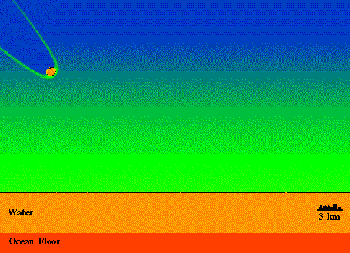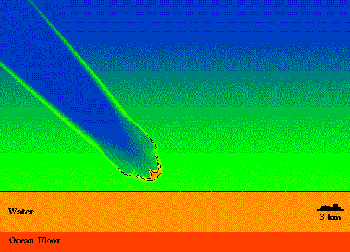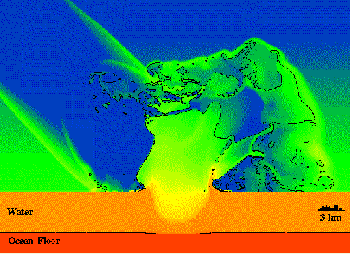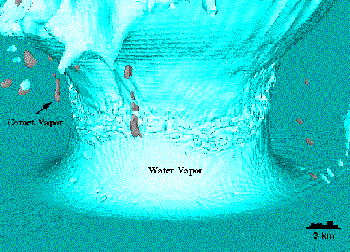Ground Zero
To test its still-uncompleted Teraflop computer, which will be used to perform "nondestructive testing" of nuclear weapons, Sandia National Laboratory was asked to run a demonstration that would be of general interest to the scientific community. The researchers selected the impact of a 1 kilometer diameter comet in the ocean--an explosive event that would be equal to detonating 10 times the amount of nuclear weapons that existed during the height of the Cold War in the 1960s.
Here are some selected images from the simulation. The New York City skyline is shown for scale.

The simulation starts with a 1 km diameter comet (weighing about 1 billion tons) traveling 60 km/s and impacting Earth's atmosphere at a 45 degree angle (the most probable angle of impact).

The impacting comet immediately produces a strong luminescent bow shock in the atmosphere as it proceeds downwards.

After 0.7 seconds, the badly deformed comet hits the surface forming a large transient cavity in the ocean. The transient cavity filled with high pressure steam explodes into the stratosphere.

The comet and large quantities of ocean water are vaporized by the tremendous energy of the impact (300 Gigatons TNT equivalent) and ejected onto suborbital ballistic trajectories that reenter worldwide.
Images: Sandia National Laboratory
